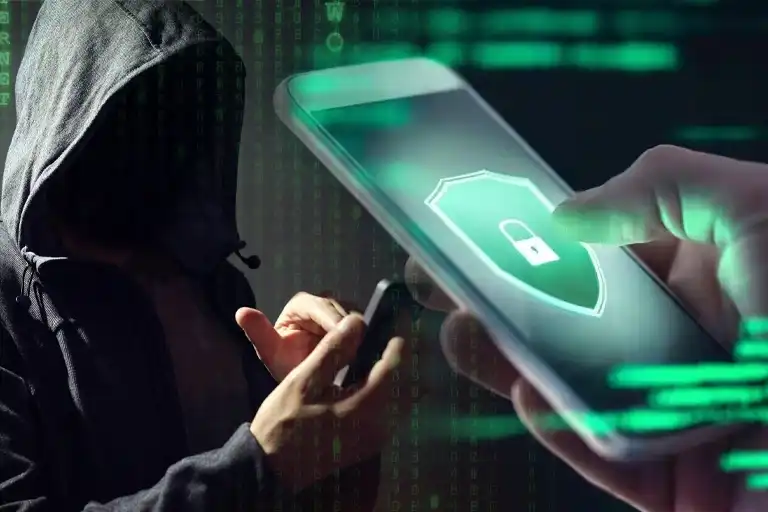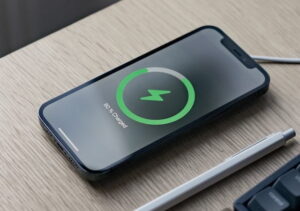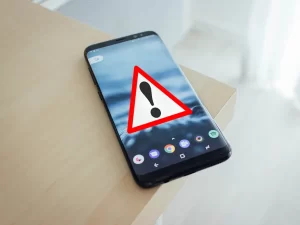In this digital world, it is very important to prevent hackers from getting into your phone. Cell phones do more than just talk to people; they also store private data such as passwords, personal messages, and financial information. As hackers become better at breaking into systems without permission, understanding the risks of phone hacking is the first thing you should do to protect your device. Hackers can exploit software bugs, phishing, or unsecured networks to break into your phone. Being aware of these risks can help you take steps to protect your privacy and the security of your personal information.
1. Keeping Your Phone’s Software Up-to-Date
One of the best ways to prevent hackers from breaking into your phone is to keep your phone software up to date. Software updates often come with security patches and bug fixes to fix vulnerabilities that hackers can exploit. Keeping your operating system and apps up to date ensures that your phone always has the latest security solutions. You can manually check for updates in your device settings, but most smartphones do this for you. Keeping your software up to date reduces the chance of security breaches and increases your phone’s defenses against potential threats.
2. Create a Unique and Strong Password
To keep your phone and the accounts connected to it secure, you should use a strong and unique password. If your password is weak or easily cracked, hackers can easily gain access to your devices and personal information. Strong passwords usually consist of a combination of letters, numbers, and special characters. They also don’t use easy-to-find information like birthdays or common words. Also, don’t use the same password for multiple accounts. Instead, give each account its unique password and consider using a password manager to keep them secure and tracked. This practice makes your phone more secure by making it harder for hackers to break in without your permission.
3. Enabling Two-Factor Authentication
Two-factor authentication (2FA) makes your phone more secure by requiring two different types of verification before you can access your account. Typically, you need to know something (like your password) and have something (like a code sent to your phone or generated by an authenticator app). 2FA adds another layer of protection against unauthorized access to your important accounts, like email and financial services. Even if a hacker gets your password, they’ll need a second factor to get in. When you set up 2FA, your phone is generally more secure and your personal information is protected from hackers.
4. Avoiding Public Wi-Fi for Sensitive Transactions
Public Wi-Fi networks, like those at airports and coffee shops, can have security holes that hackers can exploit. When you use public Wi-Fi, your information can be sent over an unsecured network. This makes it easier for hackers to steal and access private information. To protect your phone from potential threats, avoid using your phone to perform sensitive tasks, such as online banking or shopping, while connected to public Wi-Fi. If you need to access private data, use a secure connection such as a virtual private network (VPN) or mobile data. These steps can help protect your personal data and prevent others from stealing it.
5. Grant App Permissions Carefully
Apps on your phone often ask for permission to use your contacts, location, camera, and other features and data. Giving hackers too many or unnecessary permissions can make your device less secure and give them more ways to break in. When you install new apps, carefully read the permissions they ask for and determine whether the app actually needs them. Don’t give apps permissions they don’t need to do their job, and regularly review and change app permissions in your device settings. Understanding what apps can do with your permissions can help protect your phone from security risks and unauthorized access.
6. Protect your Data with Encryption
With the right key, encryption turns your data into a code that only the person with the code can read. Many smartphones have built-in encryption tools to keep your personal information safe if your phone is lost or stolen. Enabling encryption makes it difficult for hackers to access your data, even if they have physical access to your device. They need the right decryption key. Check your phone’s security settings and follow the on-screen instructions to enable encryption. Encryption keeps your data more secure and protects your privacy from others accessing your account.
7. Avoiding Phishing Scams and Suspicious Links
Hackers often obtain people’s personal information through phishing and shady-looking links. These types of scams often appear to be a genuine message or email from someone you know and trust, asking you to provide personal information or click on a link to a malicious website. To prevent these threats from reaching your phone, be cautious when you receive unexpected messages or requests for personal information. Don’t click on links from sources you don’t know or trust, and make sure the message is authentic before you respond. Cyberattacks can happen, but you can protect your personal information and reduce your risk of falling victim to them by staying vigilant and avoiding phishing attacks.
Conclusion
Hackers can breach your personal information and privacy, so you need to protect your phone from them. You can make your phone more secure by understanding the risks, keeping your software up to date, using strong passwords, and enabling two-factor authentication. To make your device more secure, avoid using public Wi-Fi for private transactions, be mindful of app permissions, and only download apps from sources you know and trust. To keep your phone secure, you should also encrypt it, regularly check your app security settings, and be wary of phishing attacks. By doing these things, you can reduce the risk of security breaches and make your phone a safe tool in your digital life.
FAQs
1. How often should I change the software on my phone?
You should install software updates on your phone as soon as they become available. Most smartphones update themselves, but you can also check for updates in your device settings to make sure you have the latest security patches and improvements.
2. What is two-factor authentication (2FA)? Why is it important?
Two-factor authentication (2FA) makes your account more secure by requiring two different types of verification before you can gain access. This is important because it adds an extra layer of security to prevent unauthorized access. Even if a hacker gets your password, it will be difficult for them to access your account.
3. How can you recognize and avoid phishing scams?
To recognize and avoid phishing scams, be wary of emails or messages that ask for personal information you don’t expect. Don’t click on links from sources you don’t trust, and make sure any messages you receive are genuine before providing any personal information. Look for signs of strange behavior, such as misspelled words or nonsensical requests.
4. What should I do if I think someone has hacked my phone?
If you think someone has hacked your phone, immediately change the passwords for important accounts, scan for threats with a trusted antivirus app, and check your phone’s security settings. If you need further assistance, contact your phone manufacturer or a security expert.
5. Is it safe to use public Wi-Fi for banking?
It is generally unsafe to conduct sensitive online banking or other activities over public Wi-Fi, as the security of these networks can be breached. Avoid using public Wi-Fi for these types of activities. Instead, use a secure connection, such as a virtual private network (VPN) or mobile data.




